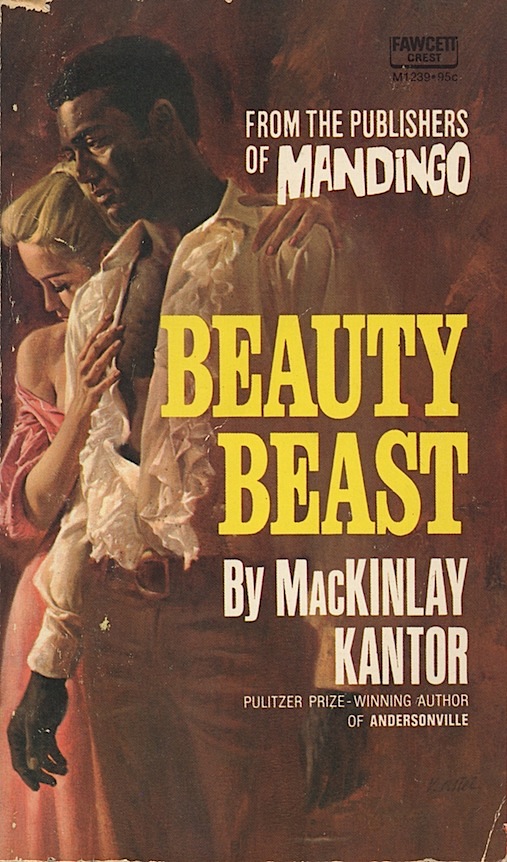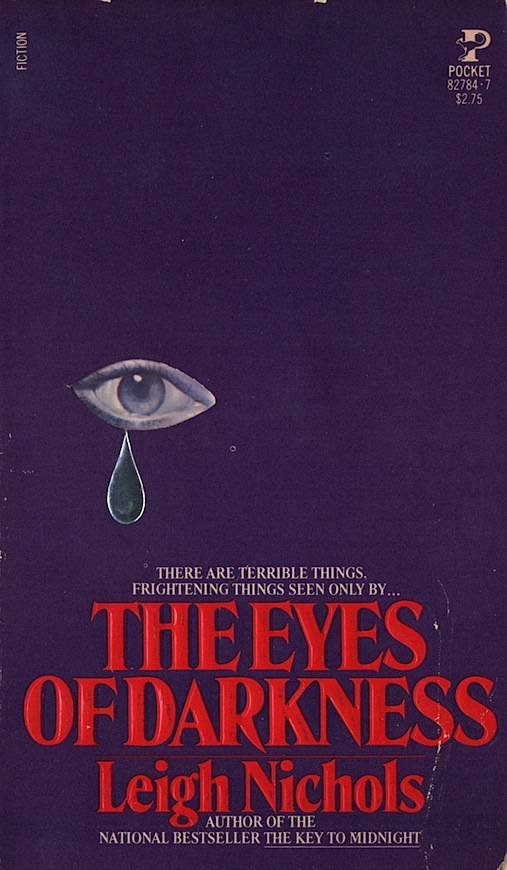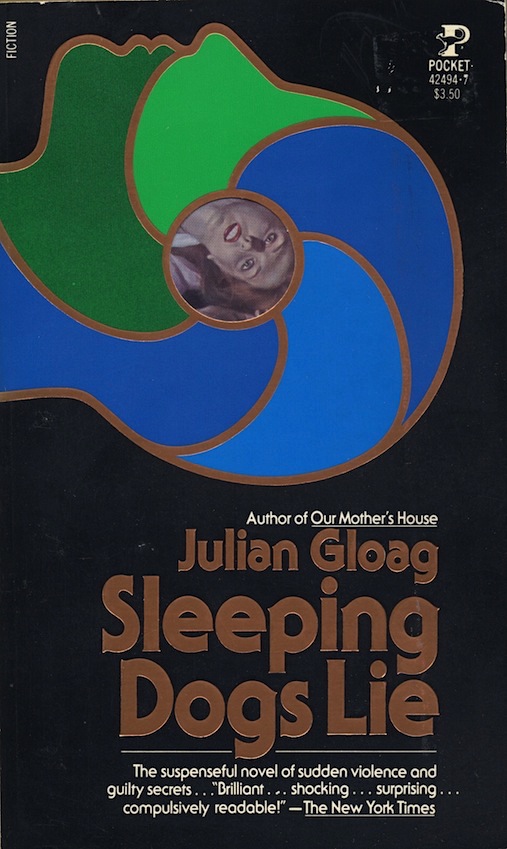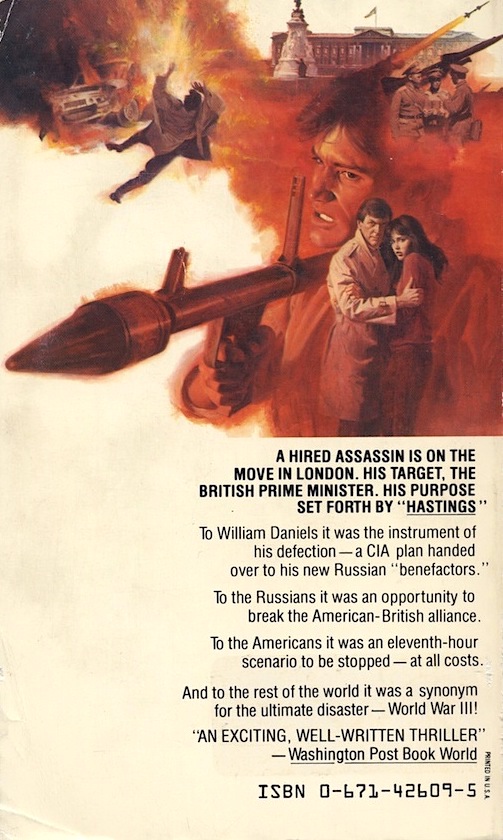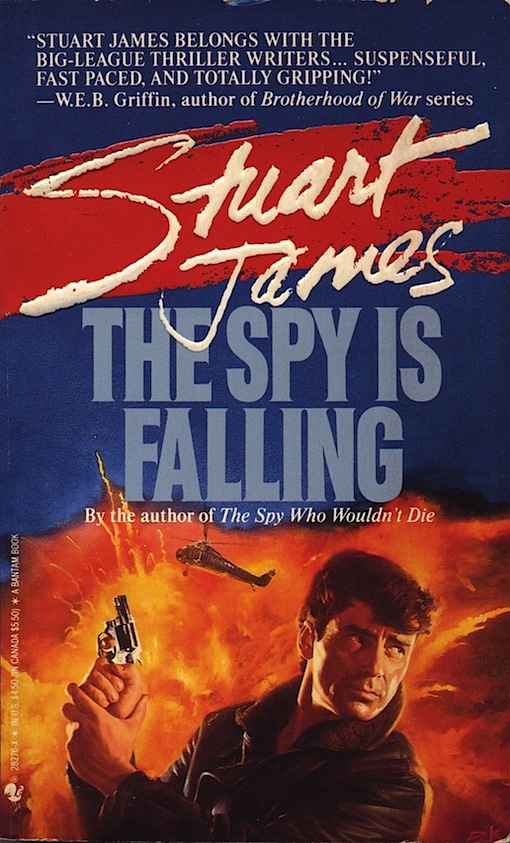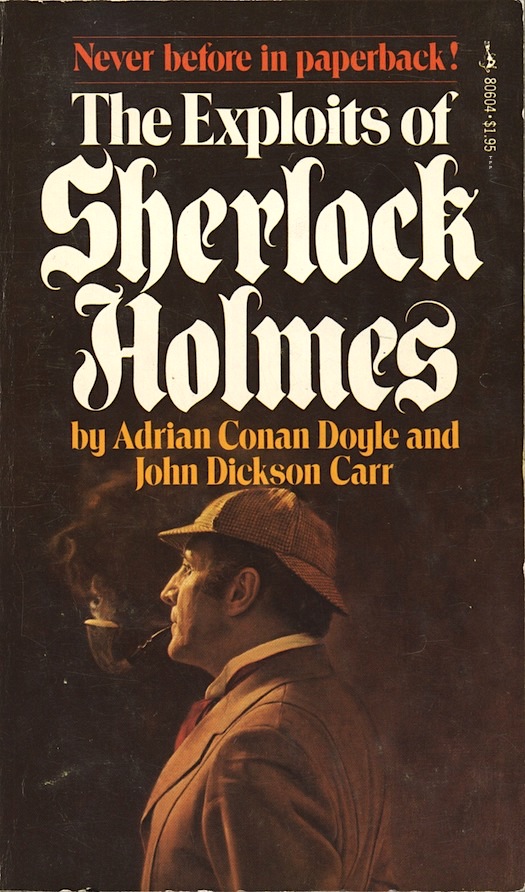Roger Kastel (b.1931-) is, and has been, one of America's best and most versatile genre illustrators. He can formulate action scenes, montages, figures, portraits, landscapes and romantic trysts with considerable effectiveness and clarity. His drawing and painting style adheres to direct realism, but it's also nuanced, and beautifully distinctive.
 |
| CLICK TO ENLARGE |
Kastel is of course is renowned for producing the illustration that helped propel the paperback version of Peter Benchley's novel Jaws (1975) into an international bestseller. Soon afterward his great white shark morphed into a poster that helped promote Jaws the movie into becoming one of the most iconic films of all time. I can't think of another piece of illustration that's been so successful at promoting separate mediums, or one that has become so prominent a piece of our entertainment heritage.
 |
| CLICK TO ENLARGE |
Kastel also produced the poster art for the 1982 film, The Empire Strikes Back, a brilliant homage to the original Gone With The Wind poster, which is now one of the most admired images in the Star Wars iconography. What most folks fail to realize though is that in addition to his exceptional movie poster work, Kastel has produced more than a thousand illustrations for magazine and book publishers.
The urge to be an illustrator struck Kastel early in life. While still in high school he began summer studies at the prestigious Art Students League in New York City. After graduation and before his four year stint in the Navy he took classes at the Art Career School. Following his discharge he freelanced around NYC with various ad agencies while also finding time to attend evening classes back at the Art Students League, this time under famed instructor Frank Reilly. In 1962 Kastel made his first professional sale to Pocket Books, and he has been impressing fans of illustration and art ever since.
This is the first paperback edition of Jaws
by Peter Benchley, published by Bantam in January of 1975. I've been trying to replace this rather well worn copy of Jaws
with a clean, unread copy for several years now with absolutely no luck at
all. It would seem that every copy out there has been savagely bitten at least
once.
Kastel's original Jaws
painting was an oil on board approximately 39 x 30 inches in dimension.
After Bantam lent the painting to Universal Pictures in 1975 to help
promote their movie it went suddenly missing, and has never been seen
since, or at least not publicly that is. If it were found today its
intrinsic value would be nearly incalculable.
Kastel's expertise at painting figures demonstrated itself clearly in this cover for the antebellum novel, Beauty Beast, by MacKinlay Kantor. Fawcett Crest published it in paperback in 1968. Kantor (1904-1977) published approximately 50 books in his lifetime, 30 of which were novels. He also wrote hundreds of short stories and articles and was an accomplished screenplay writer, bit actor and amateur musician. In 1956 he won the Pulitzer Prize for his dramatic Civil War novel, Andersonville. Kantor was also known for his limited use of punctuation and quotation marks in his literary compositions, and he may have been the first modern writer to do so.
'She had bought many slaves, but none like Beauty Beast. From the moment she saw him--smooth, golden, powerful--she knew she had to own him... This rich, sensual novel of a woman's forbidden love for a magnificent young slave brings to violent life the passion, the decadence, the savagery of the Old South.'
I bought this 1970 Bantam copy of Dave Wallis' anti-establishment cult classic novel, Only Lovers Left Alive, in a used bookstore knowing full well that it was the work of Roger Kastel and not James Bama, with whom it has been mistakenly attributed to by several paperback collectors. Kastel actually studied under Bama as he learned the book cover business, and both men were guided professionally by Bantam's astute art director Len Leone, so it was only natural that Roger would produce covers that mirrored that provenance.
'It was all over. The phony society their parents created stood in ruins. They were free to start again, to make a brave new world.'
During the Seventies, Kastel painted several horror covers for Bantam, including this mood-inducing hangman for 50 Great Horror Stories, a mammoth 499 page anthology edited by John Canning. It was published in April of 1976.
'Here is a powerful collection of tales of witches, weirds, vengeful spirits, sudden victims, and an endless parade of scarifying things-that-go-bump-in-the-night! Tales of dread and danger from our own world... and beyond!'
Kastel replicated his Jaws composition to stunning effect for Richard Masson's suspense novel Creatures, which Pocket published in 1979. This Richard Masson, however, does not appear to be the same author who wrote the juvenile novels Boonie and Dodger's Lot. Creatures may in fact be a one shot deal, or perhaps it's the work of a well-known author using a pseudonym.
'Slithering relentlessly toward the metal wreckage of a jetliner flung from the sky into the swamps of New Guinea. The beast is on the move... the crocodile, two tons of monstrous razor-toothed power, driven wild by the smell of human flesh, its soulless, ruby eyes ablaze with predatory menace. Inside the ruptured plane the men and women wait helplessly. Lucky to be alive, they had thought. Now they are doubtful. Their doubt would grow quickly into terror if they knew of the four men who were also coming... four relentless men after a monstrous legendary beast---four hunters more savage than their prey itself.'
Even a writer with the kind of Edgar Award winning credentials that R. Wright Campbell has is not above an occasional criticism. Kirkus Reviews, the nation's most mordant literary sieve, labeled Campbell's balkan induced spy novel Circus Couronne as being... "a three ring circus of leaden archness." They also blasted the author's penchant for creating "ashpile sentences." Then Kirkus had the audacity to describe the book's climax as... "an ineffably wild and all-encompassing paroxysm of circus-life confraternity and espionage sentimentale, a dramatization of Picasso blue-period aerialists and Maugham grey-period Ashenden." Yup, sounds like a clear case of the pot calling the kettle black. Kastel of course had the good sense to ignore Kirkus's carping, and instead rewarded Pocket's 1979 paperback edition with one of his most atmospheric wraparound montages.
 |
| CLICK TO ENLARGE |
Kastel's stepback illustration looks like some kind of folk-art
collage you might see on PBS's Antiques Roadshow, but to me it was the
perfect accompaniment for Thomas Flanagan's debut, an historical novel titled The Year of the French.
Pocket published this paperback in 1980 and it went on to win the National Book Critics Award for Fiction. Flanagan (1923-2002), a professor of
English Literature at the University of California at Berkley and at Stony Brook University in New York, followed up with two more historical novels, The Tenants of Time (1988), and The End of the Hunt (1995), which were almost as well received as his first.
'The year of the French was 1798, when three tall ships full of French troops sailed into a tiny County Mayo harbor to help a band of desperate Romantic Irish men and women rise up against their English oppressors. Now--for every man and woman moved by passion, and thrilled by valor--there is a great novel of that grand, sad time... THE YEAR OF THE FRENCH.'
 |
| CLICK TO ENLARGE |
Back Bay was Bostonian William Martin's fiction debut. As a 1980 hardcover Martin's novel spent eight weeks on the New York Times bestseller list. To honor his surprising success, Kastel produced an excellent stepback illustration for Pocket's first ever paperback edition in 1981, highlighting several of the story's key characters. Martin has since written nine more novels, all of which are styled by similarly placed history-mystery-treasure themes, and each one has been enthusiastically endorsed by both critics and readers alike, myself included. Back Bay is in fact is one of the most enjoyable and entertaining novels I've ever read.
'The Legendary Pratt Family. Powerful men, spirited women. Through six generations of lust, scandal, murder and duplicity they searched for the lost Paul Revere treasure. Now a clever young woman struggle with the last pieces of the puzzle and their own growing desires--their lives linked by a fate as dark and mysterious, as suddenly turbulent as the churning waters of Back Bay.'
 |
| CLICK TO ENLARGE |
I absolutely love Warren Adler's Trans-Siberian Express (Pocket, 1978). I read it at a time when I was trying to rekindle my interest in espionage fiction, and Adler's novel exceeded every expectation I had. To my delight, Kastel's wraparound collage exemplified the story perfectly.
'As the world's most opulent train streaks across the breadth of
Russia, the American doctor Alex Cousins finds himself plunged into
conspiracy, nuclear intrigue, and a passionate affair with a beautiful
Soviet agent.'
The Trans-Siberian Express represents the longest network of railway lines in the world, some 5,772 miles, connecting Moscow with Vladivostok in the Russian Far East. It takes eight days to complete the journey while crossing eight time zones. Built between 1891 and 1916 by the Tsar Alexander III and his son Nicholas, the railway has since gone on to be the source of much romanticizing in both literature and movies.
 |
| CLICK TO ENLARGE |
The Eyes of Darkness was the second of six novels written by Dean Koontz using his pseudonym Leigh Nichols. Pocket's 1981 paperback edition cleverly showed a woman's eye peaking out through a single die cast keyhole on the front cover. The stepback illustration underneath was marked by a stylized "R", visible in the lower left corner, symbolizing the first letter of both Kastel's first and last names.
'It is a year since Tina Evans lost her little boy Danny in a tragic accident... a year since she began the painful process of forgetting, of trying to go on. But today this shocking message appeared on the blackboard in Danny's room: NOT DEAD HELP ME. Was it someone's grim joke? The tangible evidence of her own tormented unconscious? Or something... more? The search for the answer will begin now... A search that will drive a beautiful anguished woman and her compassionate lover through the neon clamor of Las Vegas nightlife, the sun-scorched desert, the mighty shadows of Boulder Dam and the frozen towers of the High Sierras. People will die now, coldly, brutally, while a buried truth struggles to the surface... a truth so incredible, so frightening, so dangerous that its secret must be kept at the price of any life--any man, any woman... any child.'
 |
| CLICK TO ENLARGE |
Kastel's stepback illustration for Sleeping Dogs Lie (Pocket, 1981), with its lavender tone and epigrammatic display of the novel's main characters, gave prospective buyers of the paperback an enticing preview of the story's latent gothic atmosphere. It certainly had me stepping towards the cashier at my local B. Dalton's.
'Alex Brinton's mother was dead at the bottom of the stairs... An
accident. It was over now. Let the dead rest. Why trouble the innocent?
Let sleeping dogs lie. But it was not over for Alex Brinton--or
psychiatrist Hugh Welchman. Why was Alex paralizyed with fear of
descending the stone staircase at the college? And what hidden terrors
still shrouded the whole Brinton family in mystery and suspicion? Now a
psychological puzzle has become an obsession for Hugh Welchman, driving
him to dig deeper and deeper... to question his own neighbors... his own
friends... even his own wife. Suddenly his ordered world is beginning
to slip... and fall. For among the most ordinary people lurk secrets...
secrets of sexual aberration... secrets of betrayal... dark secrets...
guilty secrets.'
British author Julian Gloag is noted for having written the oft praised and once filmed novel, Our Mother's House, which was published twenty years before Sleeping Dogs Lie. That was also the same year that Kastel made his first professional sale to Pocket Books.
With a brilliantly designed bullseye on the front cover, and ample space on the back for both an illustration and plot description, Alfred Coppel's cold war thriller, The Hastings Conspiracy (Pocket, 1982), seemed like the perfect conveyance for an artist with Kastel's propensities and in fact it was, as evidenced by the great collage that Kastel provided.
'Brede wanted to smash the unconscious face. The intensity of his feeling startled him. He flexed his burning hands, took the clip from the pistol and emptied it, slipping the bullets into his pocket. "Get me a lamp cord," he said. Lara looked at him without understanding. "A lamp cord. any one of them. that one." He pointed to a lamp beside a shabby love seat. Lara brought him the lamp and ripped the cord free, using it to truss the man, Vietcong style, elbows drawn back and tied to his ankles.
Brede slapped the man's face until the eyes opened. They were watery blue and confused. "Who sent you? Brede asked.
The man stare back blankly.
Brede said to Lara, "Ask him in Russian."
The girl spoke to him and the man shook his head. Brede took the pistol and held the tube of the silencer against the man's eye. "Who sent you, you son of a bitch?"
There was terror in the pale eyes, but he didn't speak. Lara turned away.
Brede felt his hands trembling, and it wasn't from the pain in them. He wanted to savage the man.
Lara said in a strangled voice, "Robert--don't--"'
Brede slapped the man's face until the eyes opened. They were watery blue and confused. "Who sent you? Brede asked.
The man stare back blankly.
Brede said to Lara, "Ask him in Russian."
The girl spoke to him and the man shook his head. Brede took the pistol and held the tube of the silencer against the man's eye. "Who sent you, you son of a bitch?"
There was terror in the pale eyes, but he didn't speak. Lara turned away.
Brede felt his hands trembling, and it wasn't from the pain in them. He wanted to savage the man.
Lara said in a strangled voice, "Robert--don't--"'
 |
| CLICK TO ENLARGE |
Kastel's stepback cover on economist and one-time disgraced banker Paul E. Erdman's acclaimed financial thriller, The Last Days of America (Pocket, 1982), was painted in the same great manner as The Hastings Conspiracy. The single die cast keyhole on the front also made more use of Roger's talent for graphic portraiture.
'1985. The Russians are in Poland. A new fascism grips Europe as America desperately tries to beef up its nuclear deterrent. And in this world of mounting chaos, secret liaisons, quick arrivals and departures to and from the world's capitals, of global corruption, sinister politics and expedient murder--Frank Rogers, president of a California aerospace company, appears in Switzerland with 20 million dollars, to bribe the world's secret policy-makers, to swing the pendulum of power back to the United States, and prevent THE LAST DAYS OF AMERICA.'
Kastel produced a terrific wraparound illustration for the cover of Twilight, yet another of Dean Koontz's thrillers published under his Leigh Nichols pen-name. Pocket published this edition in November, 1984, and then four years later the novel was reissued as a hardcover by small press publisher Dark Harvest under the expanded title The Servants of Twilight. Artist Phil Parks created an especially nice jacket illustration for that limited edition, which at one time I owned but sold and now wish I wouldn't have. Berkley's 1990 paperback edition also has a nice cover (possibly by Don Brautigam), but of the three I prefer Kastel's the most, plus it professes the tone of the novel perfectly.
'A parking lot in southern California. A screaming woman, a threat--and then an act of grotesque violence. Suddenly Christine Scavello's life is a nightmare. Her pride and joy, her only child, has been targeted for death by a group of religious fanatics. They've branded him the Antichrist... and they won't stop until he's dead. Christine, her son, and the one man who's risked everything to help them, are running, running from the hounds of death, running beyond the edge of terror, into the realm of... TWILIGHT.'
 |
| CLICK TO ENLARGE |
Bestselling British author and tendentious former political figure Jeffrey Archer got the full wraparound treatment from Kastel, albeit a narrow strip of one, for his political potboiler, First Among Equals (Pocket, 1985). To date, Archer has published 22 novels and 8 short story collections, with his 23rd novel scheduled to hit shelves in late 2018.
Kastel was the first artist to provide a realistic portrait of conflicted private investigator Burke, from Andrew H. Vachss's debut novel, Flood, which Pocket published in 1986. Lawyer and child protection consultant Vachss would go on to write 17 more novels in the Burke series, his 18th and final one appearing in the year 2008.
'She came into Burke's office on a steamy city morning, a small blond angel bent on revenge. Her name is Flood, and she wants Burke to find a child murderer called The Cobra--so she can kill him with her bare hands. In New York's underworld of drugs, hustlers and kiddie porn, Burke's dragnet closes in. The hunt is on--for a psycho the police can't get, for one last chance to even the score.'
Stuart James moved around quite a bit before becoming a published novelist: copy boy, sports reporter, journalist, army intelligence clerk, hunting guide, truck driver, rough carpenter, bartender, ice cream salesman, magazine staff writer and short story writer. James, whose last known address was in Greenwich, CT, and then most recently in Florida, is by nature an outdoorsman and he spends a great deal of his free time sailing, kayaking, scuba diving, skiing, climbing and hiking. The Spy Who Wouldn't Die, written in between said outdoor activity, was published in May, 1989, the first of three thrillers that James would place with Bantam. I like Kastel's cover illustration because it shows the novel's main
protagonist, Philip Dalbey, as a determined, steely-eyed
older man who just happens to be about my age. It's refreshing to have a
gray-haired hero to cheer for in adventure fiction.
'When ex-CIA courier Philip Dalbey's extranged wife is killed in an automobile 'accident,' he hears the warning loud and cldear: he will be the next to die, as have other veterans who forty years ago were involved in a disatrous OSS mission code-named "Calico." Dalbey jettisons his successful career as a New York business consultant to immerse himself once again in the shadowy world of espionage--to hunt his wife's killer, to put the past to rest forever, and to save his own life. From suburban Connecticut to Manhattan's West Side, from Chesapeake Bay to the Netherlands to a harrowing confrontation on a sheer wall of the Adriondacks, Dalbey races toward a chilling life-and-death climax where he will finally come to terms with his demons: the unknown killer, the CIA, a Denver billionaire, a spy who wouldn't die, and, ultimately, his own son.'
Kastel sensationalized Stuart James's second espionage novel, The Spy is Falling, with a fiery background explosion, and in the foreground, a handsome gun-wielding agent. Bantam published this paperback in November, 1989.
'Veteran CIA field operative Peter Garvey is out of a job, cast off by the Agency because he rubbed some higher-ups the wrong way. But the CIA isn't the only game in town, and when a seasoned spy like Garvey falls out of the Company nest, the Pentagon is there to catch him. Section III, a special operations unit attached to the Department of Defense, has plans for Garvey in the Middle East. It's a mission so black that they decide not to tell him the details--until he's so deep undercover inside Tripoli's Al'm Muktar Prison that he can't dig himself out. Dr. Jacob Loesser, a physicist vital to the success of S.D.I. research, is being held hostage in the Libyan prison. The Pentagon needs him back, and Garvey is the good doctor's ticket to freedom.'
 |
| CLICK TO ENLARGE |
Kirkus Reviews called James Carroll's novel Firebird a..."superior, involving, reflective, and resonant spy thriller... and certainly one of the author's best!" I wouldn't necessarily call Kastel's cover and stepback illustration for Firebird his best or even his most resonant composition (though that eyeball is definitely eye-catching!), but it certainly met all of the demands of the book. Signet published this paperback edition in 1990.
'Christopher Malone is a young, idealistic G-man in the golden age of the F.B.I. under the revered J. Edgar Hoover. He is in Washington to take part in a top secret operation to save the security of the U.S. from a monstrous Soviet threat. That, at least, is what he is told by Hoover himself. What Chris begins to find out, however, is something else. And suddenly, shatteringly, he's in a maze of political perversion and sexual treachery where nothing is what it seems, and no one can be trusted--not his country, his friends, his enemies, his lover, or even himself...'
Kastel was given the task of creating the stepback art for Kolymsky Heights, three-time Golden Dagger Award winning author Lionel Davidson's final literary fling after a self-imposed sixteen year hiatus from novel writing. The die cast keyhole on the front cover was covered by a thin layer of red cellophane, thin enough to let the Kastel's illustration peek through to tantalizing effect. St. Martin's published this adventure novel in paperback in October, 1995.
'Strong, cryptic messages from the icy ends of the earth urgently call for the expertise of one man: the enigmatic Johnny Porter--Canadian-Indian scholar with a natural gift for languages and disguises, fierce rebel, loner, outdoorsman, cynic, genius. In the brutal terrain of Northern Siberia, a Russian research station conceals a dark scientific secret that could be used for the world's good, or for the ultimate evil. But before Porter can smuggle it out, he must smuggle himself in... if he can survive.'
After more than 55 years as an award winning professional illustrator and fine artist, Roger Kastel has no doubt relaxed his output somewhat, and deservedly so. But if you've ever wanted to own one of his prints like I do, I suggest visiting his personal website where you can browse from among twenty reasonably priced selections. For those patrons with greater aspirations there may be original paintings offered.
If I had deeper pockets I would probably buy his original Sherlock Holmes painting, which is one of my favorite portraits of the great Baker Street detective. It was produced to embellish The Exploits of Sherlock Holmes by Adrian Conan Doyle and John Dickson Carr, which Pocket published in paperback in 1976.
If I had deeper pockets I would probably buy his original Sherlock Holmes painting, which is one of my favorite portraits of the great Baker Street detective. It was produced to embellish The Exploits of Sherlock Holmes by Adrian Conan Doyle and John Dickson Carr, which Pocket published in paperback in 1976.
'Sherlock Holmes and Dr. Watson embark on twelve new detective adventures that have never before appeared in a paperbound book. These strange and surprising cases--only hinted at in the famous earlier chronicles--are recorded at last in full. Here is the good Watson, rushing impetuously to the aid of lovely ladies in distress. And Holmes, taking soothing pleasure from his violin while frustrating Scotland Yards' Lestrade at every encounter. These are, indeed, cases for the connoisseur. No one could have produced them with the authentic Conan Doyle flavor but Sir Arthur's son Adrian. Writing with one of the world's greatest masters of mystery, John Dickson Carr, he has produced a rare casebook to delight and confound Sherlock Holmes fans the world over!'
May your pipe always be full, Roger.
[Originally posted in 2014. © Revised October, 2018, Jeffersen]


